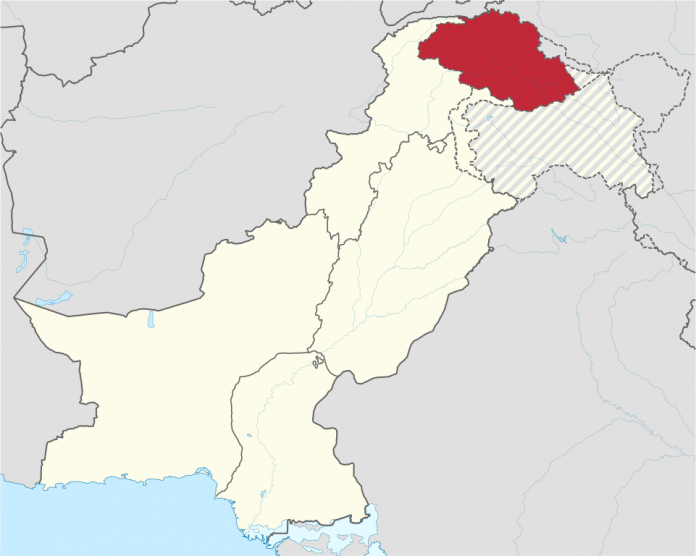In a recent development, the Pakistani Supreme Court on April 30, allowed its government to conduct upcoming general elections and set up a caretaker government in Pakistan Administered Kashmir’s Gilgit-Baltistan. As the tenure of the incumbent government of the region is set to end on or before June 24, 2020, the elections are likely to follow within 60 days of the expiry of the Gilgit-Baltistan Legislative Assembly.
Gilgit-Baltistan which is the north western portion of Kashmir, has been a disputed area between India and Pakistan since 1947. It borders Afghanistan’s Wakhan Corridor to the north, China’s Xinjiang province to the east and northeast, Indian Administered Jammu and Kashmir and Ladakh to south and Pakistan’s Khyber Pakhtunkhwa to the west. The Line of Control (LoC) bifurcates the Indian and the Pakistani side of Kashmir. Gilgit-Baltistan has a separate/autonomous government. The Gilgit-Baltistan Empowerment and Self-Governance Order, 2009 lays down the power and structure of the government.
The fresh decision to hold general elections in Gilgit-Baltistan was taken under the Election Act 2017. According to Attorney General of Pakistan Khalid Jawed Khan, the amendments will take place after a Presidential order is implemented. He also said that the government of Pakistan has to look and analyse the regional situation of the area before implementing the decision to conduct elections.
As India has invariably commented on issues pertaining to Kashmir, it also lodged a strong protest against Pakistan over the latter courts’ decision to conduct general elections in Gilgit-Baltistan. “The Government of Pakistan or its judiciary has no locus standi on territories illegally and forcibly occupied by it. India completely rejects such actions and continued attempts to bring material changes in Pakistan occupied areas of the Indian territory of Jammu and Kashmir. Instead, Pakistan should immediately vacate all areas under its illegal occupation,” the Indian statement said. The government said it had issued a demarche to protest, calling it as Pakistan’s attempt to make “material changes” to the disputed area, by bringing federal authority to Gilgit-Baltistan (G-B), which has functioned as a “provincial autonomous region” since 2009.
Time and again, India has reinstated that Ladakh and Kashmir (including Gilgit-Baltistan) are its integral part, referring to the resolution passed by the Parliament in 1994 by consensus. India has been firm on its stance of objecting against any kind of elections in Gilgit-Baltistan or any other part of Pakistan Administered Kashmir. In August 2009, India protested against Pakistan’s decision to formalize the Gilgit-Baltistan administration, formerly called the “Northern Areas”, under the “Gilgit-Baltistan Empowerment and Self Governance Order, 2009”. India has also objected against elections to Gilgit-Baltistan’s legislative assembly in 2009 and 2015. In 2018, when the Gilgit Baltistan Empowerment and Self-Governance Order of 2009 was replaced with the “Gilgit-Baltistan Order 2018”, India protested against the same, stating that Pakistan should immediately vacate areas under its “illegal occupation”. The status of Gilgit-Baltistan has drawn several debates on both sides. While, there are some reports claiming that the people of the region are inclined towards joining Pakistan, there are few others claiming that the people in Gilgit-Baltistan want to join India. In Pakistan, demonstrations were carried out against the Gilgit-Baltistan order 2018 in which several people were injured following clashes between protesters and police. The protesters were reportedly approaching towards the Gilgit-Baltistan Assembly when tear gas shells and aerial firing was used by the Pakistani police. In all such move from the Pakistani side, India has refuted its legal basis.
Gilgit-Baltistan is of a geostrategic importance as the China-Pakistan Economic Corridor (CPEC) passes through this region. It also gives Pakistan a direct access to Xinjiang province of China (via Karakoram Highway). Given the developments in the relationship between China and Pakistan over the CEPC (which is a flight for China to the world energy market), India has always shown its disapproval towards the same. India’s principal concern about CPEC lies in the fact that it passes through the Gilgit-Baltistan region, which New Delhi professes as its own territory. If Gilgit-Baltistan falls under the Indian administered part, India can get a direct access to Afghanistan and further to Central Asia.
Given the political developments in Gilgit-Baltistan, the relations between India and Pakistan seem to be an “unending dispute. The status of Kashmir in general and Gilgit-Baltistan in particular is of a geopolitical concern as it has been laden with competition, conflict and dispute between India and Pakistan. The scope of cooperation between the two nations seems bleak. The reason behind this is that, cooperation mainly rewards all the actors, and everyone is expected to be benefitted by it. However, Kashmir has been a strategic region where both India and Pakistan have aimed to attain only “one major goal”- i.e. to acquire the “entire Kashmir”.
Views and opinions expressed in this article are those of the author.

Priyanjoli Ghosh works as an Analyst, focusing on geopolitical events. She holds a master’s degree in International Studies from Christ University, Bangalore. She has previously written for the Journal of Indo-Pacific Affairs, which is one of the professional journals of the U.S Air Force; National Maritime Foundation, an independent think-tank supported by the Ministry of Defense, India; and The Geopolitics.


